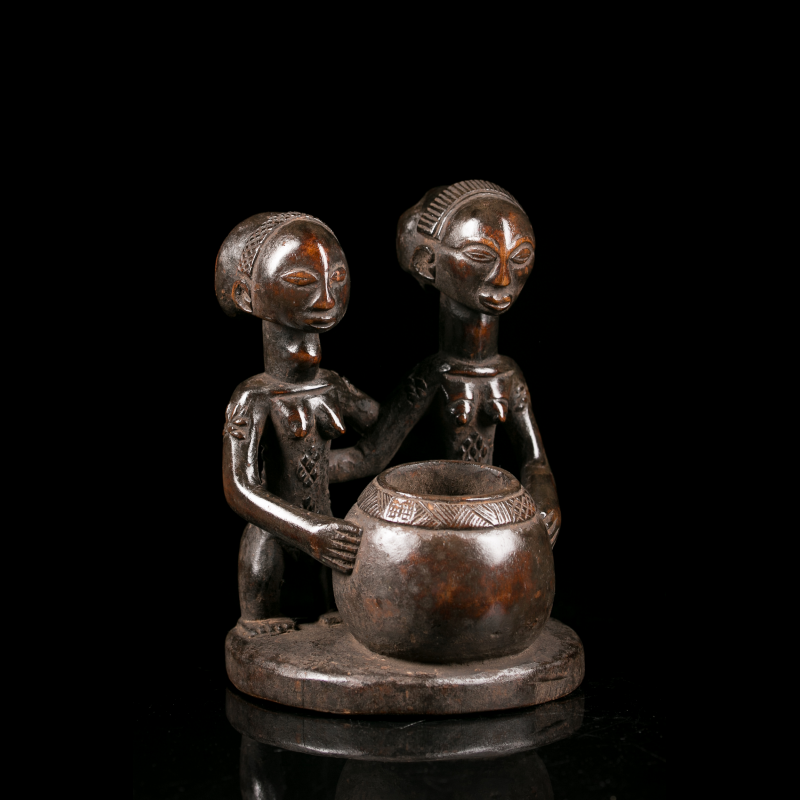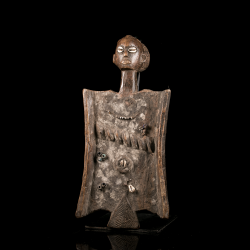







In the world of Luba art, the Mboko cup-bearing statues hold a place of honor, embodying the harmony between the visible and the invisible. These exceptional sculptures, typical of the Luba kingdom in the Democratic Republic of Congo, reveal the spiritual and artistic depth of this ancient culture.
The Mboko figures, recognizable by their cup placed either in front of the figure or on its head, served as sacred receptacles during divination rituals. Luba diviners placed offerings, remedies, or ritual objects in them to communicate with the ancestors.
The cup, often adorned with geometric patterns, symbolizes knowledge, collective memory, and the connection to the cosmos.
Beyond their aesthetic beauty, the cup-bearing statues were objects of power. Owned by chiefs and diviners, they conferred authority and spiritual legitimacy. Their presence in royal palaces and sanctuaries testified to the social prestige of their owners.
Today, traditional Mboko Luba statues adorn the world's greatest museums: the Musée du Quai Branly, the Metropolitan Museum of Art, and the British Museum.
Their rarity and exquisite craftsmanship make them prized collector's items for enthusiasts of tribal art.
Data sheet
You might also like

In the world of Luba art, the Mboko cup-bearing statues hold a place of honor, embodying the harmony between the visible and the invisible. These exceptional sculptures, typical of the Luba kingdom in the Democratic Republic of Congo, reveal the spiritual and artistic depth of this ancient culture.
The Mboko figures, recognizable by their cup placed either in front of the figure or on its head, served as sacred receptacles during divination rituals. Luba diviners placed offerings, remedies, or ritual objects in them to communicate with the ancestors.
The cup, often adorned with geometric patterns, symbolizes knowledge, collective memory, and the connection to the cosmos.
Beyond their aesthetic beauty, the cup-bearing statues were objects of power. Owned by chiefs and diviners, they conferred authority and spiritual legitimacy. Their presence in royal palaces and sanctuaries testified to the social prestige of their owners.
Today, traditional Mboko Luba statues adorn the world's greatest museums: the Musée du Quai Branly, the Metropolitan Museum of Art, and the British Museum.
Their rarity and exquisite craftsmanship make them prized collector's items for enthusiasts of tribal art.


